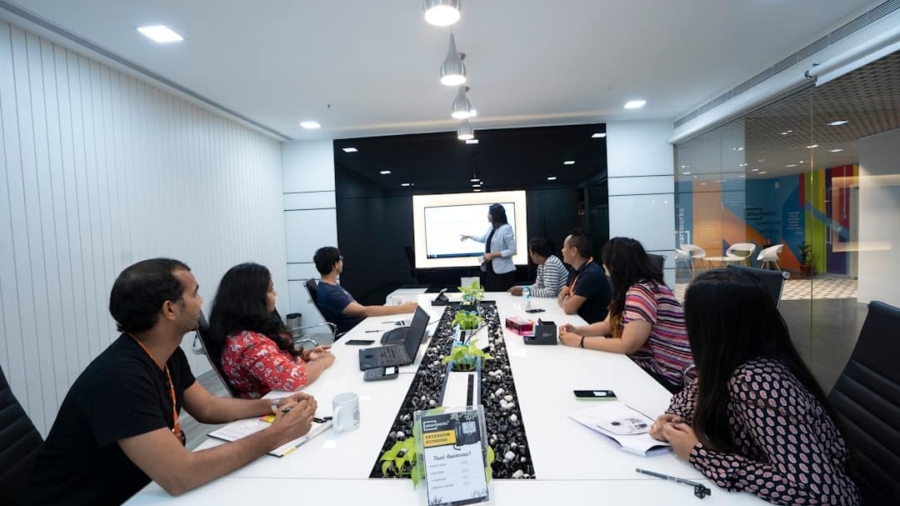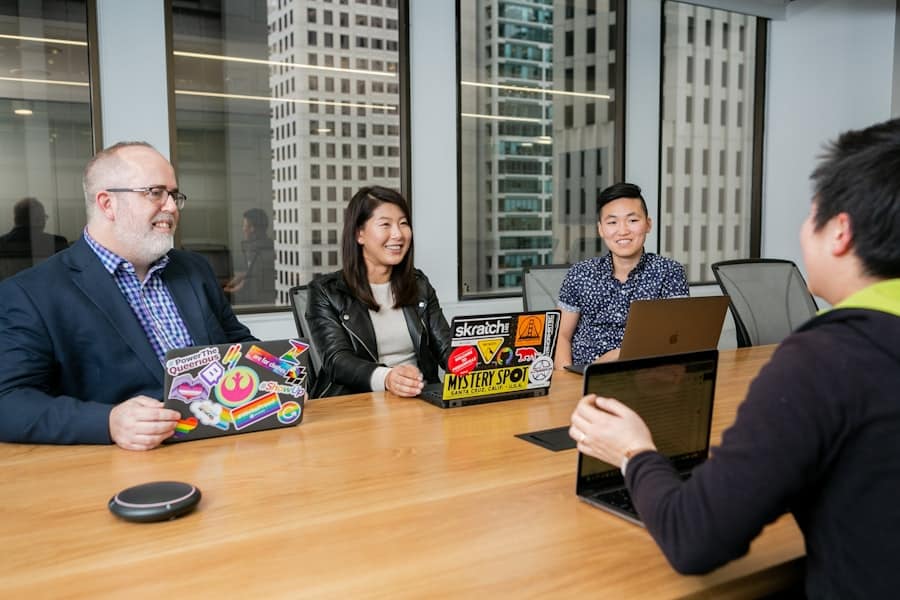Mixed Reality (MR) represents a groundbreaking convergence of Augmented Reality (AR) and Virtual Reality (VR), creating an immersive environment where digital and physical worlds coexist and interact in real-time. Unlike AR, which overlays digital information onto the real world, or VR, which immerses users in a completely virtual environment, MR allows for a seamless blend of both realms. This fusion enables users to manipulate and interact with digital objects as if they were part of their physical surroundings.
The technology relies on advanced sensors, computer vision, and spatial mapping to create a coherent experience that feels both intuitive and engaging. The development of MR has been propelled by advancements in hardware and software technologies. Devices such as Microsoft’s HoloLens and Magic Leap One exemplify the capabilities of MR, offering users the ability to visualize complex data sets, collaborate on 3D models, or even engage in interactive training scenarios.
These devices utilize sophisticated tracking systems to understand the user’s environment, allowing digital content to be anchored to real-world objects. As a result, MR not only enhances user experience but also opens new avenues for creativity and innovation across various sectors.
Key Takeaways
- Mixed reality combines elements of both augmented reality (AR) and virtual reality (VR) to create immersive experiences.
- Mixed reality offers benefits for collaboration by allowing users to interact with digital content in a physical space, enhancing communication and understanding.
- Mixed reality has applications in various industries, including healthcare, education, manufacturing, and entertainment, to improve training, design, and customer experiences.
- Mixed reality enhances remote collaboration by enabling users to share and interact with 3D models and virtual environments in real time, regardless of physical location.
- Challenges in implementing mixed reality for collaboration include technical limitations, cost, and user adoption, but these can be overcome with proper planning and support.
The Benefits of Mixed Reality for Collaboration
One of the most significant advantages of Mixed Reality is its potential to enhance collaboration among teams, particularly in environments where geographical barriers exist. MR facilitates a shared workspace where team members can interact with 3D models, visualize data, and brainstorm ideas in real-time, regardless of their physical location. This capability fosters a sense of presence and engagement that traditional communication tools often lack.
For instance, engineers working on a product design can gather around a virtual prototype projected in their shared space, allowing for immediate feedback and iterative improvements. Moreover, MR can significantly reduce the time and costs associated with collaboration. By enabling remote teams to visualize complex concepts without the need for physical prototypes or extensive travel, organizations can streamline their workflows and enhance productivity.
For example, in the architecture industry, architects can present their designs in a mixed reality format to clients, allowing them to walk through virtual spaces before construction begins. This not only helps in making informed decisions but also minimizes costly changes during the building phase.
Applications of Mixed Reality in Various Industries
Mixed Reality is making waves across numerous industries, each leveraging its unique capabilities to solve specific challenges. In healthcare, for instance, MR is being utilized for surgical training and planning. Surgeons can use MR to overlay critical anatomical information onto a patient’s body during procedures, enhancing precision and reducing risks.
This application not only improves surgical outcomes but also provides medical students with immersive training experiences that were previously unattainable. In the manufacturing sector, MR is transforming how companies approach assembly and maintenance tasks. Technicians can wear MR headsets that display step-by-step instructions overlaid on machinery, guiding them through complex processes with ease.
This not only increases efficiency but also reduces the likelihood of errors. Companies like Boeing have reported significant improvements in productivity by integrating MR into their assembly lines, showcasing how this technology can lead to tangible benefits in operational performance.
How Mixed Reality Enhances Remote Collaboration
The rise of remote work has underscored the need for effective collaboration tools that can bridge the gap between distributed teams. Mixed Reality addresses this need by creating immersive environments where team members can interact as if they were physically present together. Through MR platforms, users can share a virtual space where they can manipulate objects, annotate designs, and engage in discussions in real-time.
This level of interaction fosters a collaborative spirit that is often missing in traditional video conferencing setups. Furthermore, MR enhances remote collaboration by providing tools that cater to various learning styles and preferences. Visual learners benefit from seeing 3D representations of concepts, while kinesthetic learners can engage with digital objects through hands-on manipulation.
For example, during brainstorming sessions, team members can collectively build and modify ideas using virtual sticky notes or 3D models, leading to more innovative outcomes.
Overcoming Challenges in Implementing Mixed Reality for Collaboration
Despite its numerous advantages, implementing Mixed Reality for collaboration is not without challenges. One significant hurdle is the cost associated with acquiring MR hardware and software solutions. High-quality MR devices can be expensive, and organizations must also consider the costs of developing or purchasing suitable applications tailored to their specific needs.
Additionally, there may be ongoing expenses related to maintenance and updates that organizations must factor into their budgets. Another challenge lies in user adoption and training. Employees may be hesitant to embrace new technologies due to a lack of familiarity or fear of the unknown.
To overcome this barrier, organizations must invest in comprehensive training programs that not only teach employees how to use MR tools but also demonstrate their value in enhancing collaboration. By fostering a culture of innovation and providing ongoing support, companies can encourage employees to embrace MR as an integral part of their collaborative processes.
The Future of Mixed Reality in Collaboration
As technology continues to evolve, the future of Mixed Reality in collaboration looks promising. With advancements in artificial intelligence (AI) and machine learning (ML), MR experiences are expected to become even more personalized and intuitive. For instance, AI could analyze user interactions within an MR environment to provide tailored suggestions or automate repetitive tasks, further enhancing productivity.
Moreover, as 5G technology becomes more widespread, the potential for real-time collaboration in MR will expand significantly. The increased bandwidth and reduced latency will enable more complex interactions among users across different locations without lag or interruptions. This connectivity will facilitate richer experiences where multiple users can engage with high-fidelity graphics and simulations simultaneously, transforming how teams collaborate on projects.
Case Studies: Successful Implementation of Mixed Reality for Collaboration
Several organizations have successfully implemented Mixed Reality solutions to enhance collaboration within their teams. One notable example is Ford Motor Company, which has integrated MR into its design process for vehicle development. By using Microsoft HoloLens, Ford designers can visualize 3D models of vehicles at full scale within their physical environment.
This approach allows for immediate feedback from various stakeholders during the design phase, leading to faster decision-making and improved product quality. Another compelling case is that of Siemens AG, which has utilized MR for remote assistance in its manufacturing facilities. Technicians equipped with MR headsets can receive real-time guidance from experts located elsewhere, who can see what the technician sees and provide step-by-step instructions overlaid on the equipment being serviced.
This application has not only reduced downtime but has also empowered technicians with immediate access to expertise without the need for travel.
Tips for Choosing the Right Mixed Reality Solution for Collaboration
When selecting a Mixed Reality solution for collaboration, organizations should consider several key factors to ensure they choose the right fit for their needs. First and foremost, it is essential to assess the specific use cases that the organization aims to address with MR technology. Understanding whether the focus is on design visualization, remote assistance, or training will help narrow down potential solutions.
Additionally, organizations should evaluate the compatibility of MR solutions with existing systems and workflows. A seamless integration process will minimize disruptions and enhance user adoption rates. Furthermore, it is crucial to consider user experience; solutions should be intuitive and easy to navigate to encourage widespread use among team members.
Finally, organizations should prioritize vendors that offer robust support and training resources. A strong support system will help teams overcome initial hurdles associated with adopting new technology and ensure they maximize the benefits of their chosen MR solution over time. By taking these factors into account, organizations can make informed decisions that align with their collaborative goals while harnessing the full potential of Mixed Reality technology.
If you are interested in exploring the world of technology for children, you may want to check out How to Choose Your Child’s First Tablet. This article provides valuable insights into selecting the right device for your child’s needs. Additionally, if you are a fan of Apple products, you might enjoy reading The Best Apple Tablets 2023, which highlights the top options available in the market. And for those looking to upgrade their smartphone experience, The iPhone 14 Pro: Experience the Power of Pro offers a glimpse into the latest features of Apple’s flagship device.
FAQs
What is mixed reality?
Mixed reality (MR) is a technology that combines elements of both augmented reality (AR) and virtual reality (VR) to create a seamless and interactive environment where digital and physical objects coexist and interact in real time.
How does mixed reality work?
Mixed reality works by using advanced sensors, cameras, and software to blend digital content with the physical world. This allows users to interact with and manipulate virtual objects as if they were real, while still being aware of their physical surroundings.
What are the benefits of mixed reality?
Some of the benefits of mixed reality include enhanced collaboration, improved visualization of complex data, immersive training experiences, and the ability to interact with digital content in a more natural and intuitive way.
How is mixed reality used for collaboration?
Mixed reality enables seamless collaboration by allowing users in different physical locations to interact with the same virtual objects in real time. This can be particularly useful for remote teams working on design, engineering, or other collaborative projects.
What industries can benefit from mixed reality technology?
Industries such as architecture, engineering, construction, healthcare, education, and entertainment can benefit from mixed reality technology. It can be used for tasks such as design visualization, remote assistance, medical training, and immersive storytelling experiences.



